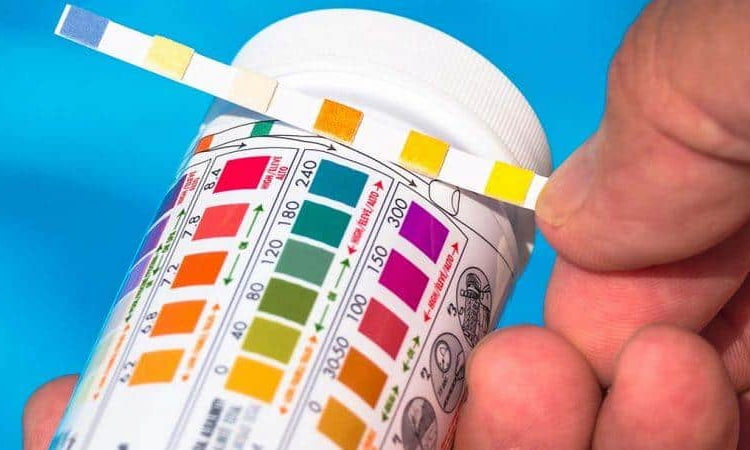You’re lounging in your hot tub, but did you know that an unchecked high pH level might be harmful? It’s not just about comfort, it’s about your health and the longevity of your tub’s components.
Yes, a high pH in a hot tub can potentially hurt you. High pH levels in a hot tub can cause skin irritation, itchy eyes, and a dry, itchy skin condition. Additionally, a high pH level can cause scale build-up in your hot tub, which can lead to inefficient operation or potential damage.
It’s important to regularly test and adjust the pH levels of your hot tub to ensure they are within the recommended range to ensure safety and comfort. We’re going to explore the risks, impacts, and how you can correct and prevent high pH levels.

Quick Navigation
Understanding the Importance of pH Levels in a Hot Tub
You’ve got to grasp that maintaining the right pH levels in your hot tub plays a crucial role in ensuring its overall functionality and safety. A balanced pH level, generally between 7.2 and 7.8, promotes optimal sanitizer efficiency and prevents damage to your hot tub components.
Let’s take a deeper dive into this. Think of the pH scale as a measure of acidity and alkalinity in your hot tub water. A lower pH signifies more acidity, while a higher pH points to greater alkalinity. If the water is too acidic, it can corrode your hot tub’s mechanical parts and cause skin irritation. On the other hand, highly alkaline water leads to scale build-up, cloudy water, and reduced sanitizer effectiveness.
You’re probably wondering, “What causes pH fluctuations?” Well, factors such as the addition of chemicals, frequency of tub usage, and even local water supply can affect the pH balance.
Related Read: Common Causes of High pH in Hot Tubs
To keep things running smoothly, you need to regularly test your hot tub water. There’s a variety of testing strips and digital testers available for this purpose. Remember, maintaining balance isn’t just for yoga—it’s for your hot tub too.
Potential Health Risks of High pH Levels
Not only can high pH levels in your hot tub damage its components, but they can also pose several health risks to you and your loved ones. High pH levels, typically above 7.8, can result in the water becoming too alkaline. This altered chemistry can lead to several detrimental health effects.
Here’s a table summarizing the potential health risks related to high pH levels:
| Health Risk | Description |
|---|---|
| Skin Irritations | Alkaline water can cause dry, itchy skin, and even rashes. |
| Eye Irritations | High alkalinity can lead to red, stinging eyes. |
| Bacterial Growth | High pH levels can reduce the efficiency of chlorine, leading to bacterial growth. |
It’s essential to regularly test and adjust your hot tub’s pH levels to ensure a safe, enjoyable experience. If you’re struggling with balancing your tub’s pH, consider enlisting the help of a professional.
Remember, maintaining proper pH levels is not only crucial for your hot tub’s lifespan but also for the health of its users. So, always keep an eye on your hot tub’s pH levels, and take action if they’re too high.
Related Read: Does Baking Soda Raise pH in Hot Tub?
The Impact of High pH on Hot Tub Components
Besides posing health risks, high pH in your hot tub can also wreak havoc on its components, causing significant damage over time. When pH levels rise above 7.8, it’s not just your skin and eyes that suffer; your hot tub’s infrastructure is also at risk.
High pH leads to scale formation—a hard, chalky deposit that clings to surfaces. You’ll find this unwelcome guest on the sides and bottom of your tub, as well as on the heater elements and pump seals. Over time, this buildup can reduce your tub’s operational efficiency and lead to costly repairs.
Moreover, high pH can cause deteriorating effects on the plastic and rubber components of your tub. The gaskets, seals, and O-rings may become brittle and crack, leading to leaks. The high pH can also degrade the tub’s metal parts, such as heaters, leading to corrosion.
Ultimately, maintaining a balanced pH is crucial for the longevity of your hot tub. Regular testing and appropriate chemical balance will not only ensure your comfort and safety but will also keep your hot tub components in top-notch condition.
Corrective Measures for High pH in Hot Tubs

Surprisingly, you’ll find that it’s quite simple to correct high pH levels in your hot tub. Initially, you’ll need to test the water using a pH testing kit. This kit will help you accurately identify the current pH level of your hot tub water.
If the pH level is above the ideal range of 7.2 to 7.8, it’s time to take corrective measures. You can lower the pH level by adding a pH decrease, commonly known as sodium bisulfate. You’re advised to follow the manufacturer’s instructions when adding the decreaser. After adding, let the water circulate for a few hours before retesting.
It’s crucial to remember that adding too much decreaser at once can bring the pH too low, causing a different set of problems. Therefore, it’s better to add the decreaser in smaller quantities, allowing ample time for the water to mix and stabilize.
Maintaining the right pH in your hot tub is a balancing act that requires regular testing and adjustment. It’s not just about comfort — it’s also about the longevity of your hot tub components and your health. Therefore, taking these corrective measures is worth the effort.
Preventive Strategies for Maintaining Optimal pH Levels
In maintaining optimal pH levels in your hot tub, you’ve got to regularly perform water tests and, if necessary, adjust the water balance with the appropriate chemicals. This isn’t just a one-off task, but a continuous commitment to ensuring your hot tub’s health.
You must check the pH level at least twice a week. The optimal range is between 7.2 and 7.8. If the pH level tests higher, it’s time to take action. Use a pH reducer, like sodium bisulfate, to bring it down. Conversely, a pH increaser, such as sodium carbonate, is needed if it’s too low.
Water hardness and alkalinity are other crucial factors to monitor. They can influence the pH level and vice versa. Balance them using a calcium hardness increaser or a total alkalinity increaser.
Moreover, regular shock treatments are essential. They remove organic waste and restore the sanitizer’s effectiveness. Just make sure you’re using the right amount according to your hot tub’s volume.
Lastly, don’t forget about proper cleaning and filtration. Clean filters contribute to a balanced water chemistry.
Frequently Asked Questions
The normal pH level for a hot tub is between 7.2 and 7.8. You measure it using a specific pH tester, often a strip that you’ll dip in the water and match to a color chart.
Yes, high pH levels in your hot tub can cause skin irritation or other dermatological issues. It’s essential to regularly test and adjust the water’s pH to maintain safe and comfortable soaking conditions.
Yes, high pH levels can affect the effectiveness of hot tub sanitizers. They’re less effective in neutralizing bacteria and other contaminants. You’ll need to balance pH levels for optimal sanitizer performance.
Natural factors like rainwater, organic materials, or high mineral content in your water can increase your hot tub’s pH level. It’s essential to regularly test and adjust it for optimal use.
Yes, you can use home remedies to reduce the high pH in your hot tub. Vinegar or lemon juice can help. However, it’s best to use a pH reducer from a pool supply store.
Conclusion
In conclusion, you mustn’t overlook the importance of maintaining balanced pH levels in your hot tub. High pH can not only pose potential health risks but also damage your hot tub components.
Regular testing and correction of pH levels are essential. You’ll also need to adopt preventive strategies to keep the pH at optimal levels. Remember, your hot tub’s health and your own well-being are intertwined, so stay vigilant!






